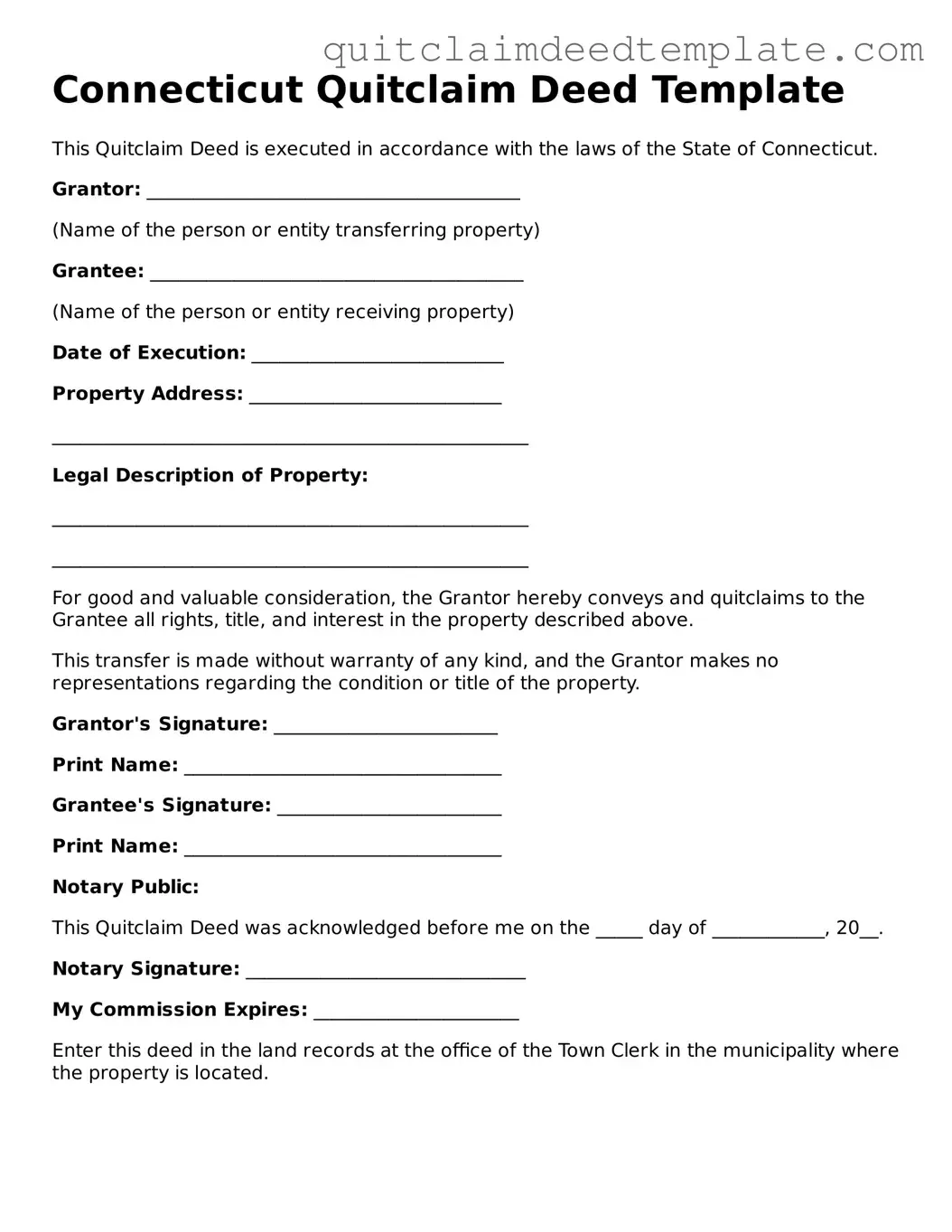Documents used along the form
The Connecticut Quitclaim Deed is a vital document used for transferring property ownership. However, several other forms and documents are often utilized in conjunction with it to ensure a smooth transaction. Below is a list of these related documents, each serving a specific purpose in the property transfer process.
- Title Search Report: This document provides a comprehensive review of the property’s title history. It identifies any liens, encumbrances, or claims against the property, ensuring that the seller has the right to transfer ownership.
- Property Survey: A property survey outlines the boundaries and dimensions of the property. It can help clarify the exact area being transferred and identify any easements or encroachments that may exist.
- Affidavit of Title: This sworn statement by the seller confirms their ownership of the property and that there are no undisclosed liens or claims. It provides additional assurance to the buyer regarding the property's title.
- Transfer Tax Return: This form is required for reporting the transfer of property to the state for tax purposes. It typically includes information about the sale price and any applicable exemptions.
- Closing Statement: Also known as a HUD-1 Settlement Statement, this document outlines all costs associated with the sale, including fees, taxes, and any adjustments. It provides transparency for both the buyer and seller during the closing process.
- Mortgage Documents: If the buyer is financing the purchase, various mortgage documents will be necessary. These include the loan application, promissory note, and mortgage agreement, which detail the terms of the loan and the buyer's obligations.
Understanding these additional documents can help facilitate a more efficient property transfer process. Each plays a crucial role in protecting the interests of both the buyer and seller, ensuring that all legal requirements are met.
